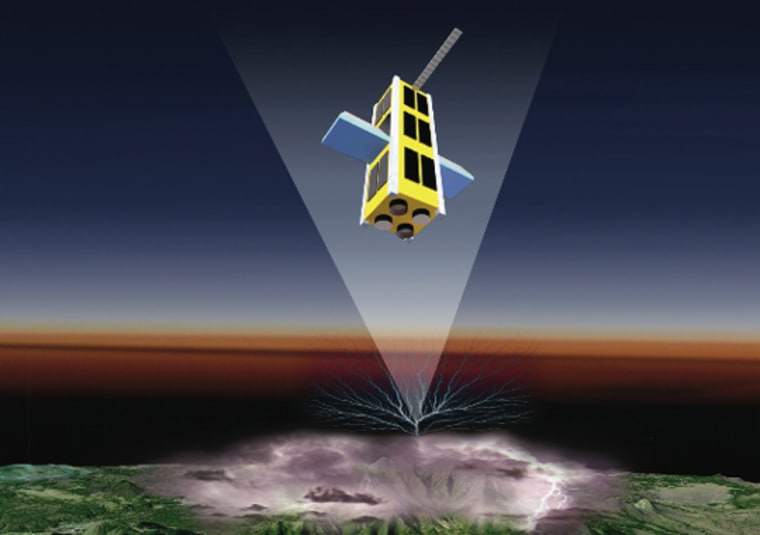When space shuttle astronauts dispatched NASA's Compton Gamma Ray Telescope into orbit in 1991, scientists figured they would learn more about supernovas, black holes and other phenomena that blast off high-energy rays.
They never expected to uncover gamma ray flashes coming from Earth itself.
"Occasionally they saw these very strange events," said NASA's Doug Rowland, with the Goddard Space Flight Center in Greenbelt, Md. "They were very short, relatively weak compared to supernova events and they seemed to be coming from the Earth."
Other than manmade nuclear explosions there had been no known sources of terrestrial gamma rays, Rowland said.
Follow-up studies confirmed the discovery and left scientists scrambling for an explanation. A new mission, called Firefly, is being developed to test the leading theory: terrestrial gamma ray flashes are caused by lightning.
"So far there's just circumstantial evidence," Rowland told Discovery News.
The idea is that strong electrical fields over lightning are producing ions and electrons out of neutral gas and blasting them into space. The flashes last for just a fraction of a second, but they are very strong — up to 30 times more powerful than a cosmic ray.
That's puny compared to gamma ray bursts from, for example, a supernova. "If one of those went off on Earth, it would exterminate all life," Rowland said.
The planet's atmosphere protects Earth from gamma radiation — both cosmic and terrestrial varieties — so scientists need to put sensors in space to study the phenomena.
The research is not just an academic curiousity. Allan Weatherwax, a Firefly co-investigator with New York's Siena College, points out that high energy electrons associated with the flashes could be a source of the charged particles that end up impacting spacecraft and satellites orbiting Earth.
Slideshow 12 photos
Month in Space: January 2014
"With all the satellites flying up there, there is a real desire to understand how this radiation works," Weatherwax said.
NASA and the National Science Foundation are collaborating on Firefly, a low-budget program intended to draw students into hands-on research.
The science instruments will be incorporated into a football-sized spacecraft known as CubeSat and launched as a secondary payload in 2010 or 2011. Firefly will cost about $1 million for a three-year mission.
Lead engineer Joe Kujawski said advances in solar cell technology and electronics made projects like Firefly possible.
"These two advances allow us to put functional science instruments in a package 4 inches by 4 inches by 12 inches," he said.
Firefly is being designed to simultaneously track lightning strikes and gamma ray flashes to determine what relationship, if any, exists, and what types of lightning trigger the bursts.
"We can build this time in history when each photon and electron arrives in this detector and what its energy was," Rowland said. "What we hope to do with Firefly is to know unambiguously that that gamma ray flash was a lightning strike."

